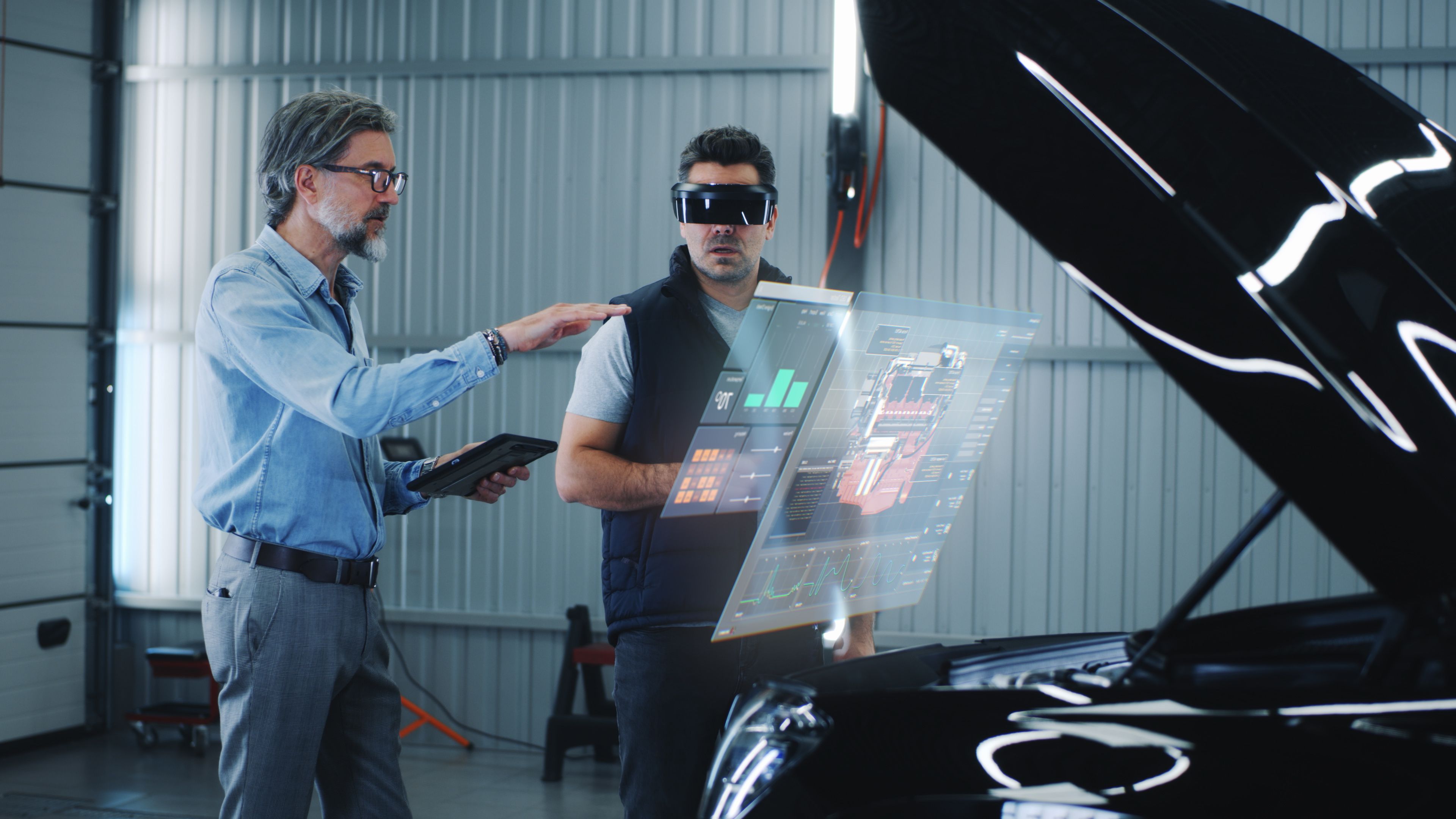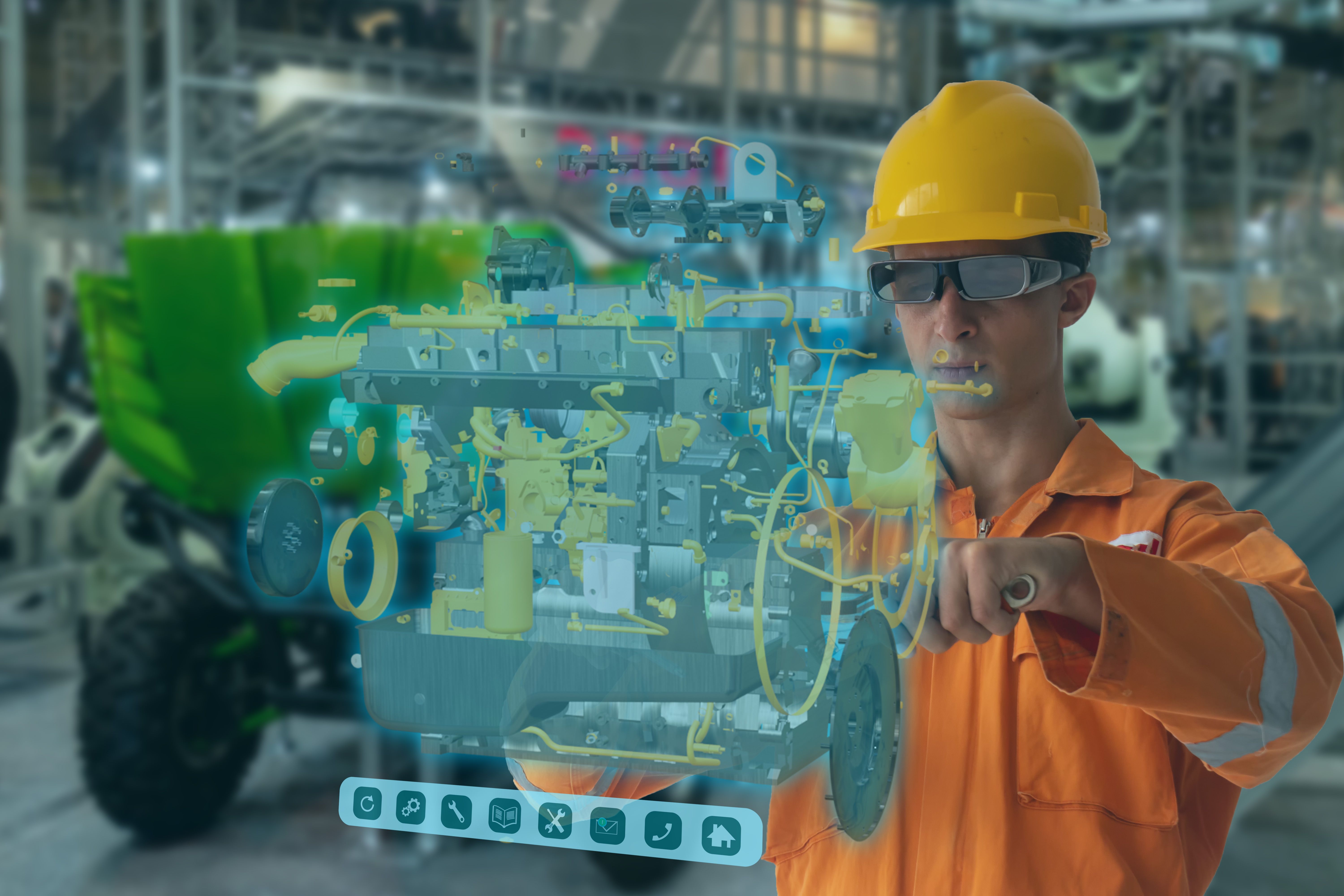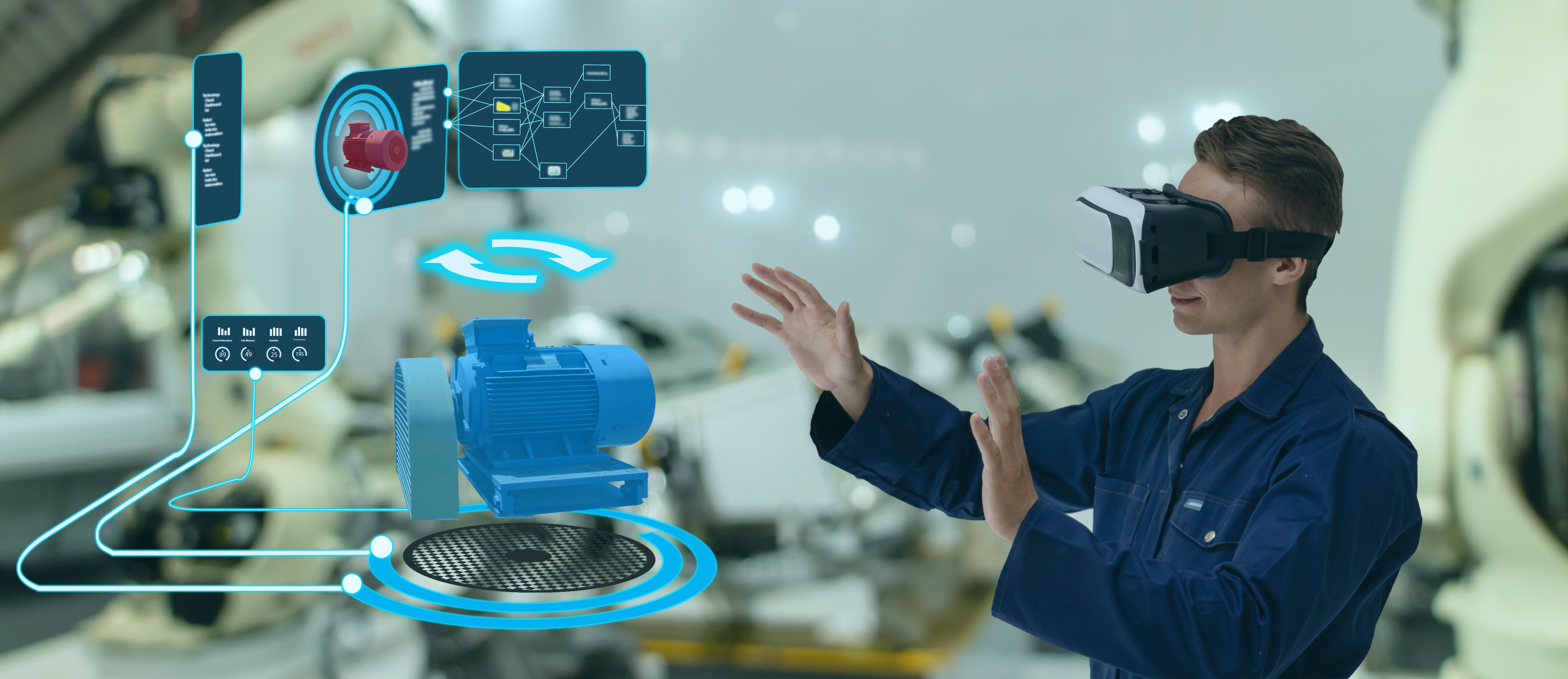As technology rapidly advances, so does how we use it to interact with the world. Augmented Reality (AR) and Virtual Reality (VR) are two technologies that have recently increased in popularity. While they have commonly been used for entertainment, there is growing potential for their use in other areas, including Human Resources Management (HRM). In this blog post, we'll explore how AR and VR technologies could be used in HRM to improve employee training in hybrid environments.
AR and VR Technologies, Explained
Augmented reality and virtual reality have been around for some time, but only recently have businesses explored the possibilities they offer in HRM.
Let's take a look at what AR and VR are, how they work, and their potential applications in HR management.
What is Augmented Reality?
AR technology allows users to interact with digital elements superimposed onto physical environments.
Additionally, AR enhances one’s view of the real world by adding layers of information or visuals on top of it. This could include anything from 3D models, text messages, video streaming, audio commentary, or any other type of digital enhancement.
What is Virtual Reality?
Virtual reality, on the other hand, replaces one’s view of the real world with a completely immersive simulated environment.
Unlike AR, which merely adds to one’s perception of the real world, VR creates an entirely virtual environment that users can interact with using special headsets and motion sensors.
How do AR and VR Work?
Both augmented reality and virtual reality technologies rely on cameras and sensors to track user movements to respond accurately to user input. For example, if you wear AR goggles that track your eyesight when you move your head left or right, it will adjust your field of vision accordingly.
Similarly, if you are wearing a VR headset that senses your body movements, you can move around within the virtual space just as you would in the physical world.
Both AR and VR also require powerful processors capable of rendering high-resolution graphics quickly enough for users to enjoy smooth interactions with digital elements.
Uses of AR and VR Technologies in HR Management and Employee Training So Far
Employees today expect more from their employers than ever. They want competitive salaries, benefits packages, and career development opportunities that challenge them professionally while helping them stay up-to-date with industry trends.
By leveraging augmented reality or virtual reality technologies in employee training programs, companies can give employees access to interactive learning materials without leaving their desks.
Also, by utilizing simulations, companies can give employees hands-on experience working with complex equipment or systems without putting them at risk physically or financially should something go wrong during training sessions.
Enworks is helpful when it comes to employee training. You can create a safe workplace thanks to remote training initiatives by incorporating AR technologies and Enworks. Consequently, you can save money from on-site training and visits to the floor.
What Challenges Does AR and VR Pose for HR specialists in Employee training? Tips to Overcome Them
Augmented and virtual reality is a growing trend in employee training. Companies are increasingly using these technologies to create immersive, interactive experiences that help employees learn more quickly and effectively. However, while they can be powerful tools, they also come with some unique challenges.
Here are three tips for HR specialists navigating the potential pitfalls of AR/VR in employee training.
Establish Clear Goals
The first step for any HR specialist looking to maximize their AR/VR investment ROI is establishing clear goals for their training program.
What do you want your employees to learn? How will you measure success? Knowing what you want to achieve will help you plan a program that meets your needs and keeps your team engaged throughout the process.
Invest in Quality Equipment
Using high-quality hardware and software is essential for creating an immersive experience that engages employees with the material they are learning.
Investing in the right equipment—including headsets, tablets, computers, software, etc.—will ensure that your team can access all the features available and get the most out of their training experience.
Additionally, ensure your equipment is regularly updated to remain compatible with new releases and upgraded versions of existing software.
Keep Employees Engaged
One of the biggest challenges in AR and virtual reality training is keeping employees engaged throughout the process.
It’s important to create an environment where people feel comfortable asking questions and participating actively in discussions about their learning. Providing regular feedback on progress can also help keep motivation levels high and ensure everyone is making meaningful progress toward reaching their goals.
Virtual reality and augmented reality have both been around for some time, but their potential in the workplace is just being realized. These technologies transform our work from employee training and HR management to office design and customer service.
It's time to explore how virtual and augmented reality will change the workplace as we know it.
Benefits of VR and AR in HRM
VR and AR can greatly benefit HR departments by streamlining processes such as onboarding, training new hires, employee evaluations, and performance reviews. They also benefit employee training in three ways.
Another great use for VR and AR technology is employee training. Companies can create virtual simulations replicating real-world jobs like operating machinery or safely working with hazardous materials.
These simulations allow employees to learn at their own pace while reducing the risk of accidents on the job site. Companies can use AR technology to create interactive 3D models of products or services in order to train sales staff on how best to promote their products or services.
Takeaway
As you can see, AR/VR technology offers a wealth of potential benefits for HR specialists looking to improve employee training. By establishing clear goals, investing in quality equipment, and keeping employees engaged, you can maximize the return on your investment and help your team reach its full potential.
Are you ready to start using VR and AR in your workplace? Let us know how we can help!


